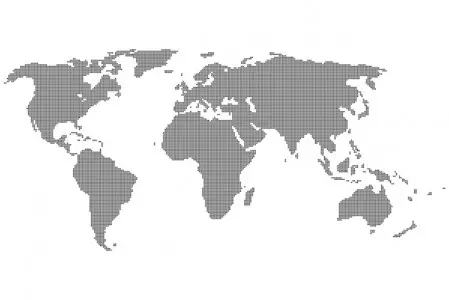Share on Social Media:
The Top 5 Countries with the Highest Annual Tropical Deforestation Rates
| Country | Hectares Cut | |
|---|---|---|
| 1 | Brazil | -3,466,000 |
| 2 | Indonesia | -1,447,800 |
| 3 | Mexico | -395,000 |
| 4 | Papua New Guinea | -250,200 |
| 5 | Peru | -224,600 |
 Special Report
Special Report
- Africa and South America continued to have the largest net loss of forests. Oceania and North and Central America also had a net loss of forests. The forest area in Europe continued to expand, although at a slower rate. Asia, which had a net loss in the 1990s, reported a net gain of forests in the period 2000-2005, primarily due to large-scale afforestation reported by China ("afforestation" is the act or process of creating a new forest where none had existed before, or reforestation of areas long deforested).
- The total forest area in 2005 was just under 4 billion hectares, corresponding to an average of 0.62 ha per capita. But the area of forest is unevenly distributed. For example, 64 countries with a combined population of 2 billion have less than 0.1 ha of forest per capita. The ten most forest-rich countries account for two-thirds of the total forest area. Seven countries or territories have no forest at all, and an additional 57 have forest on less than 10 percent of their total land area.
- Deforestation, mainly conversion of forests to agricultural land, continues at an alarmingly high rate - about 13 million hectares per year. At the same time, forest planting, landscape restoration and natural expansion of forests have significantly reduced the net loss of forest area. The net change in forest area in the period 2000-2005 is estimated at -7.3 million hectares per year (an area about the size of Sierra Leone or Panama), down from -8.9 million hectares per year in the period 1990-2000.
- Forests still cover about 30 percent of the world's land area, but areas the size of Panama are lost each year.The biggest driver of deforestation is agriculture. Farmers cut forests to provide more room for planting crops or grazing livestock. Often many small farmers will each clear a few acres to feed their families by cutting down trees and burning them in a process known as "slash and burn" agriculture.
- In Nigeria 81% of its original forest cover is now permanently lost while the tropical rainforests of Brazil are less by 90-95%. The forests of Central America are down by two-thirds lowlands, since 1950. Countries like India, Mexico, Philippines, Thailand, Indonesia, Bangladesh, Myanmar, China, Sri Lanka, the Congo and Ghana have lost much more than 50% of their rainforest cover and harvesting of forest cover has left Afghanistan with a little over 25% forests throughout the country.
Tags:
Forests & Trees, The Environment, Deforestation Statistics
Sources: FAO 2005 Global Forest Resources Assessment.
List Notes:
Sources: FAO 2005 Global Forest Resources Assessment.
List Notes:

